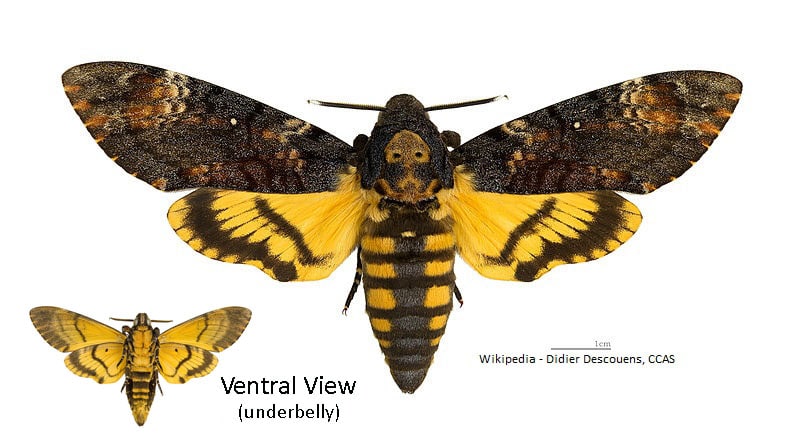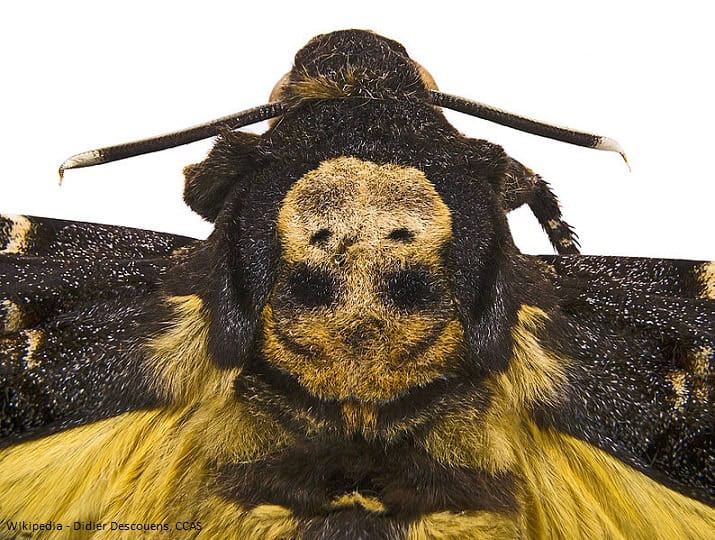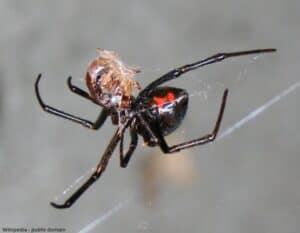Death´s-head Hawkmoth – A Case of Misrepresentation
The Death’s-head Hawkmoth is also known as a “bee robber” but it’s not the bee he’s after . . . it’s the honey! The name “Death’s-head” is derived from the image of a skull and bones on the back of the thorax. There are three species of Death’s-head hawkmoths that belong to the family Sphingidae. Large in size, their wingspans can reach a whopping 5 inches!
Death´s-head Hawkmoth (Acherontia atropos) Male
This particular moth has been featured in art and film, including the poster of a famous blockbuster chiller, “The Silence of the Lambs.” Because of the skull-like image, the death’s-head hawkmoth has been associated with evil and the supernatural but in fact, the moth is quite harmless (unless you are a potato plant or beehive, then your leaves would get eaten and your honey nicked). Some cultures believe that if the moth flies into your house, it brings bad luck and death or misfortune are sure to follow.
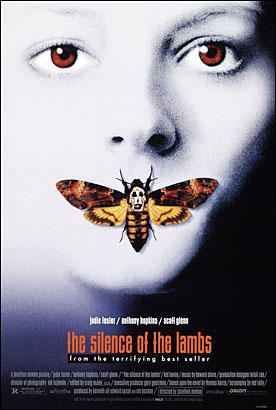
The squeaky noise that a death´s-head hawkmoth makes doesn´t help its negative reputation; in the words of entomologist Edward Newman, “. . . let the cause of the noise be what it may, the effect produces the most superstitious feelings among the uneducated, by whom it is always regarded with feelings of awe and terror.”
Close-up of a skull and cross bones on the moth´s thorax.
Superstition surrounding the death´s-head hawkmoth is also related to its scientific name atropos. In Greek mythology, atropos comes from the myth about three Moirai (the Fates) who “cut the threads of life of all beings.” The genus Acherontia, is derived from “Acheron,” a river in Greece, which in Greek mythology, is known as the “river of pain.” The moth never had a chance for a better reputation.
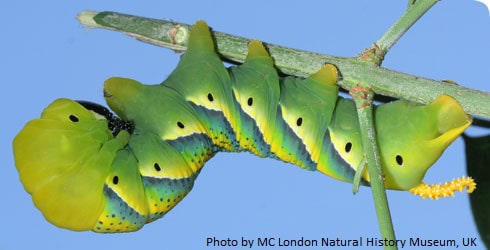
Video of newly hatched Death’s-head Hawkmoth
Behavior and Habitat
The death’s-head hawkmoth prefers to raid beehives rather than gather its own nectar. Somehow, the moth is able to sneak into a hive and drink honey right from the comb. There is contradicting theories as to how the moth can enter and exit a hive without getting stung. Some say that the squeaking noise is similar to a queen bee and so the hawkmoth is accepted by honeybees. Scientists, however, have found that after drinking honey, the death’s-head hawkmoth can’t squeak for up to 5 hours. The moth would have to make a very hasty exit after drinking the honey – If it relied only on its squeaking ability.
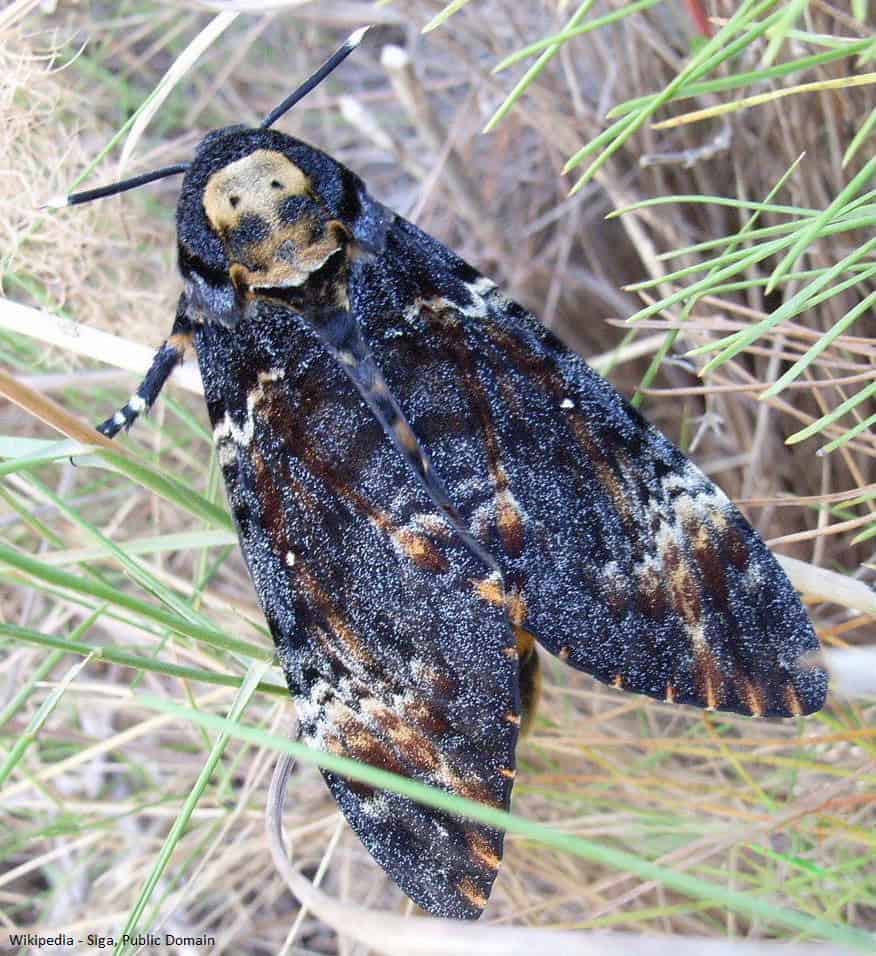
The answer to the moth´s thieving abilities lies in recent studies which indicate the death´s-head hawkmoth is chemically “invisible” to bees. There are four honeybee fatty acids present in the moth, which provide a kind of “chemical camouflage” to the sensitive smelling honeybee, thereby making it easier for the moth to come and go as he pleases.
Death’s-head hawkmoths are found throughout tropical Africa and in temperate regions. It is also common to the United Kingdom and is by far their largest moth species. The female moth has a fatter, rounded body, while the male´s abdomen is narrow and tapers at the end. Death’s-head hawkmoth caterpillars feed on leaves of plants. Historically, the caterpillars were found in potato fields but due to mechanical harvesting and widespread chemical use, they now feed on a variety of plants, including deadly nightshade. Slow to move, they wait until they’ve finished one leaf before moving onto a new one. The caterpillar will click its mandibles and wiggle around to try to bite an invader but other than that, the death’s-head hawkmoth is fairly harmless – despite its given name.
Article by Donna Walker
References
National History Museum. London, U.K. “Acherontia atropos (death’s-head hawkmoth.” Retrieved from nhm.ac.uk/nature. Online
Wikipedia. “Acherontia atropos.” Retrieved from en.wikipedia.org/wiki/Acherontia_atropos. Online
